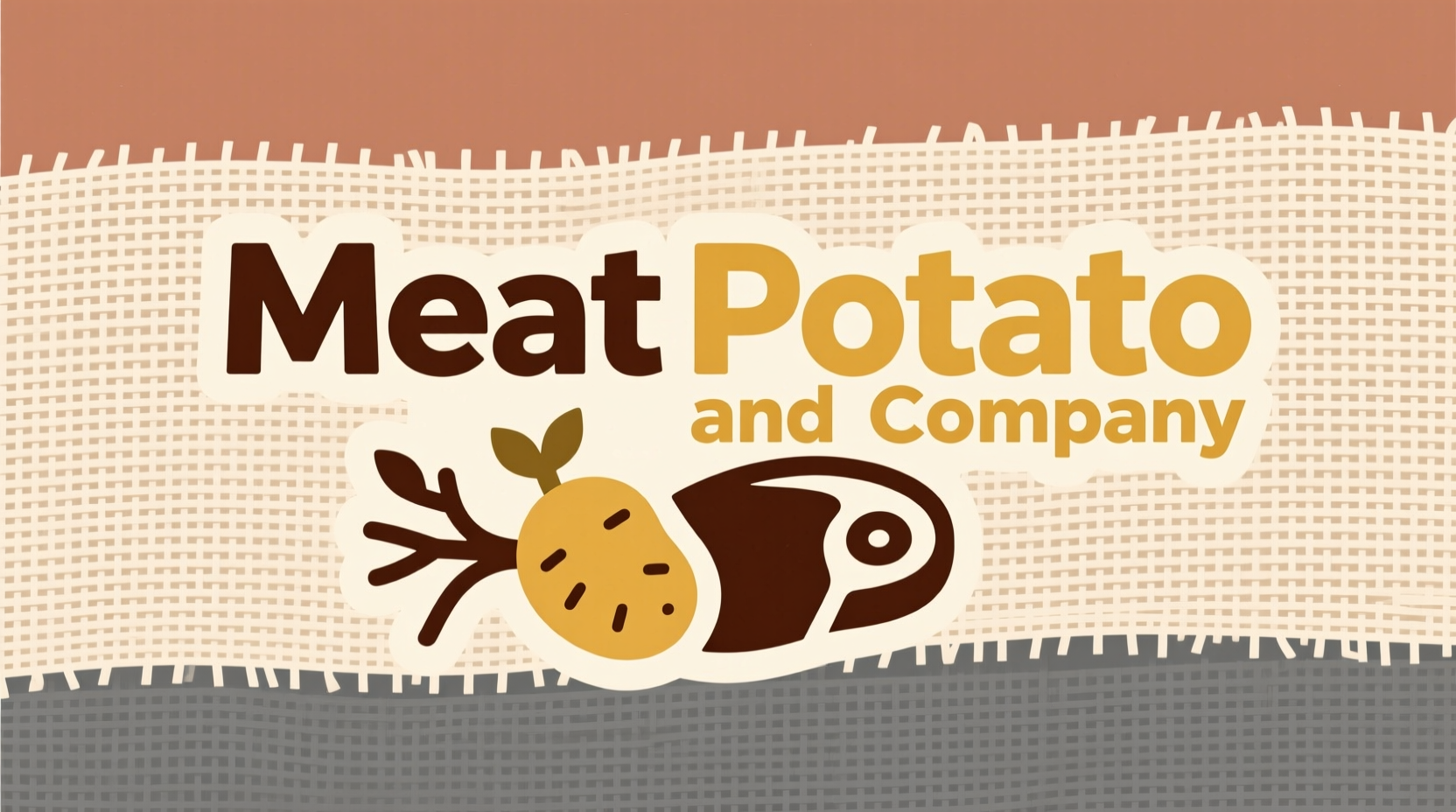When you search for "meat and potato company," you're likely seeking to understand both the literal food businesses specializing in these staple ingredients and the business metaphor describing no-nonsense operational approaches. This comprehensive guide delivers exactly that—explaining historical context, business models, industry data, and practical insights whether you're a curious consumer or aspiring entrepreneur.
The Historical Roots of Meat and Potato Businesses
Meat and potatoes as a culinary combination dates back centuries, evolving from practical sustenance to a business model. In 19th century America, working-class families relied on this affordable protein-carbohydrate pairing. By the early 20th century, specialized eateries emerged catering to laborers needing hearty, inexpensive meals. The term "meat and potatoes" entered business lexicon by the 1950s, describing companies focused on essential offerings rather than elaborate extras.
| Era | Business Model | Key Characteristics |
|---|---|---|
| 1800-1900 | Working-class eateries | Basic counter service, minimal seating, focus on affordability |
| 1900-1950 | Diners and cafeterias | Expanded menus with meat-and-potato specials, family-friendly |
| 1950-Present | Specialty restaurants and business metaphor | Dedicated meat-and-potato concepts, "no frills" operational approach |
Defining Characteristics of Modern Meat and Potato Companies
Today's meat and potato businesses fall into two distinct categories: literal food establishments and metaphorical business descriptions. Understanding this distinction helps consumers and entrepreneurs navigate the landscape effectively.
Literally: These are restaurants, meal prep services, or food manufacturers specializing in dishes featuring meat and potatoes as primary components. Think classic meat-and-potatoes dinners, loaded potato skins with meat toppings, or potato-based meat dishes.
Metaphorically: In business terminology, "meat and potatoes" describes companies focused on their core offerings rather than elaborate extras. These organizations prioritize reliability, simplicity, and essential value over bells and whistles.
Industry Data and Business Models
According to USDA Food Availability Data, potatoes remain America's most consumed vegetable with 46 pounds per capita annually, while meat consumption averages 222 pounds per person yearly. This consistent demand supports various business models:
- Traditional Restaurants: Full-service establishments with meat-and-potato centered menus
- Fast Casual Concepts: Streamlined service focusing on quality ingredients
- Meal Prep Services: Subscription boxes featuring meat-and-potato combinations
- Food Manufacturing: Pre-packaged meat-and-potato products for retail
The National Restaurant Association reports that "comfort food" concepts, including meat-and-potato focused establishments, grew by 12% in 2023 as consumers sought familiar, satisfying options during economic uncertainty.

Practical Considerations for Consumers
When selecting a meat and potato company for dining or meal services, consider these practical factors:
Ingredient Quality: Look for establishments specifying meat sourcing (grass-fed, organic) and potato varieties. Premium businesses often highlight these details.
Preparation Methods: Traditional meat-and-potato companies typically use time-honored cooking techniques rather than shortcuts. Ask about preparation methods when possible.
Menu Balance: While specializing in meat and potatoes, quality establishments offer vegetable accompaniments and consider nutritional balance.
Key Considerations for Entrepreneurs
Launching a successful meat and potato business requires strategic planning beyond the basic concept:
Market Differentiation: With 42% of consumers seeking "authentic" comfort food experiences (Technomic 2024), develop a unique angle—regional specialties, heritage recipes, or sustainable sourcing.
Supply Chain Management: Establish reliable relationships with meat suppliers and potato distributors. The USDA Agricultural Marketing Service provides resources for connecting with regional producers.
Menu Engineering: Balance traditional offerings with subtle innovations to maintain relevance without alienating core customers.
Current Trends Shaping the Industry
Modern meat and potato companies navigate several evolving trends:
- Health-Conscious Adaptations: 68% of consumers want traditional comfort foods with healthier preparation methods (IFIC 2024)
- Sustainability Focus: Grass-fed meat and locally sourced potatoes increasingly influence purchasing decisions
- Global Flavor Infusions: Traditional meat-and-potato dishes incorporating international spices and techniques
Successful businesses recognize that "meat and potatoes" doesn't mean stagnant—it means evolving while maintaining core appeal. The most resilient companies honor tradition while thoughtfully incorporating contemporary preferences.
Frequently Asked Questions
What defines a meat and potato company in business terms?
A meat and potato company refers to businesses focused on essential, core offerings rather than elaborate extras. In food service, it specifically denotes establishments specializing in meat-and-potato dishes. The term emphasizes reliability, simplicity, and fundamental value.
Are meat and potato companies only traditional restaurants?
No, modern meat and potato companies include various business models: traditional restaurants, fast-casual concepts, meal prep services, food manufacturing, and even metaphorical descriptions of businesses focused on core offerings rather than elaborate extras.
How has the meat and potato business concept evolved?
Originally describing working-class eateries from the 1800s, the concept evolved through diner culture in the mid-20th century to today's specialized comfort food establishments. The metaphorical business usage emerged in the 1950s to describe companies focused on essential offerings rather than elaborate extras.
What should consumers look for in quality meat and potato establishments?
Quality establishments typically specify meat sourcing (grass-fed, organic), highlight potato varieties, use traditional preparation methods, and offer balanced menus with vegetable accompaniments alongside their meat-and-potato specialties.











 浙公网安备
33010002000092号
浙公网安备
33010002000092号 浙B2-20120091-4
浙B2-20120091-4